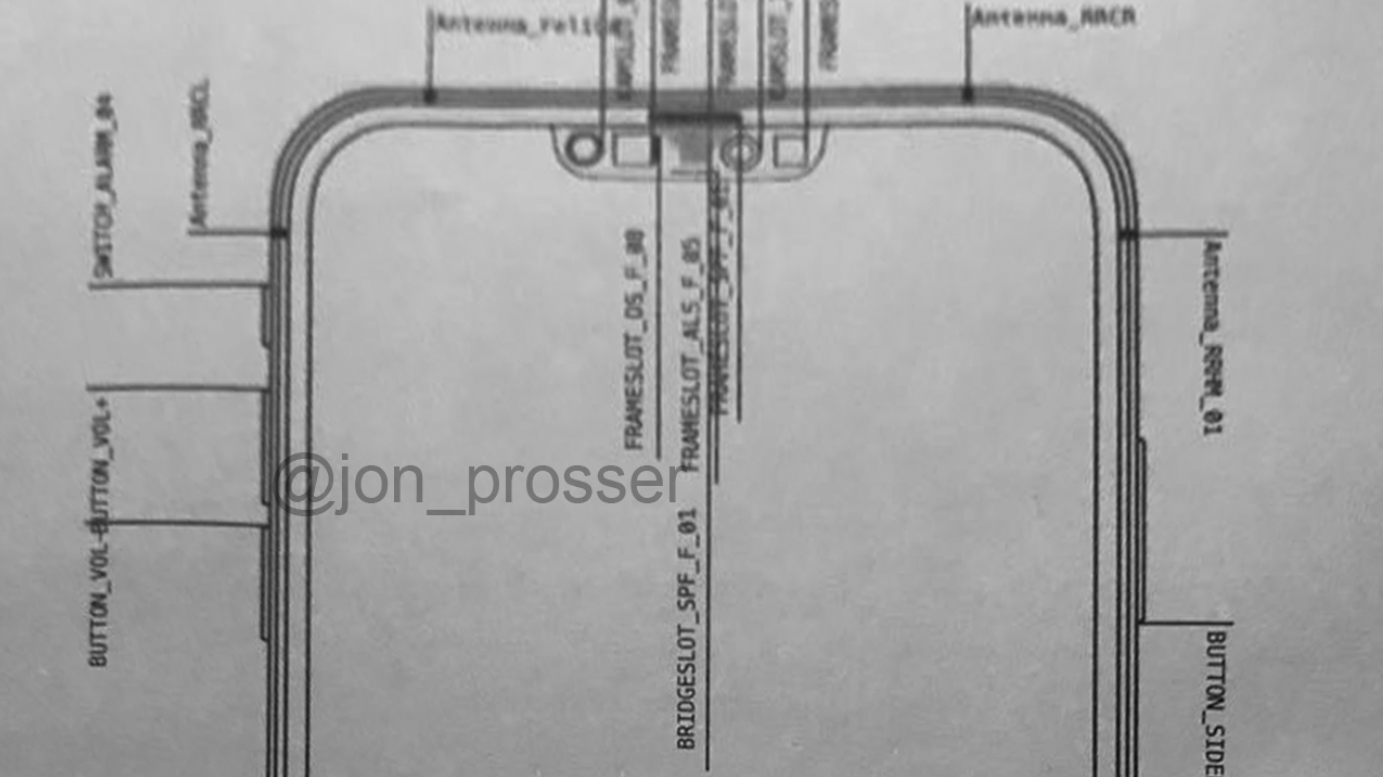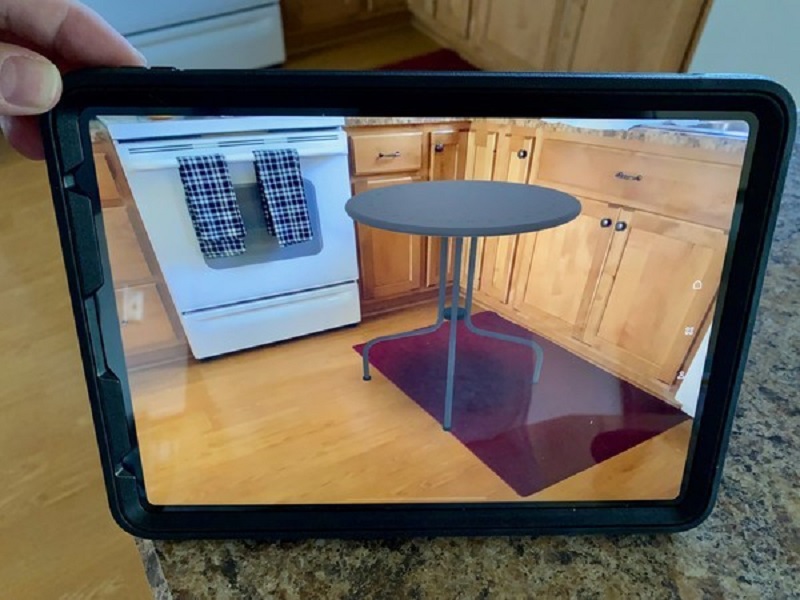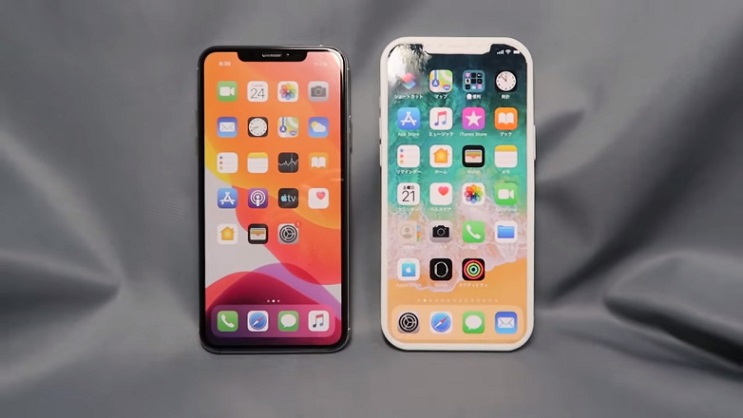It’s a month away from the launch of the 2020 iPhones, which are expected to launch in September 2020, but there are already multiple leaks and rumors about the upcoming iPhone 12 series. Rumors hint that the 2020 iPhones to be called the iPhone 12, iPhone 12 Pro and iPhone 12 Pro Max if Apple follows the same naming pattern, that they used for the 2019 iPhone lineup.

The iPhone 12 series will feature major upgrades over their previous iPhones, introducing some of the important design changes that we’ve seen since the launch of the iPhone X which was released in 2017. Leaks suggest that there will be four iPhones in three display sizes which could come in at 5.4, 6.7, and 6.1 inches.
Colors:
As per the rumor hint that the iPhone 12 series could come in light blue, violet, and light orange, along with other colors.
One of the leaks suggests that at least one of the iPhone 12 series may come with a new navy blue finish. Apple launched a new midnight green color with the iPhone 11 Pro lineup.
Processor and RAM:
Rumors suggest that the upcoming iPhone 12 series will come with the A14 chip that is manufactured on 5Nm technology by TSMC.
The A14 chip will be enough powerful for speeding up AR tasks and artificial intelligence.
Upcoming iPhone 12 series could feature 6GB and 4Gb of RAM, 4GB of RAM in lower-end iPhone 12, and 6GB of RAM in higher-end models.
Rumors suggest the 5.4 and 6.1-inch models will be lower-end iPhones with dual-lens cameras while the 6.7-inch iPhone and one 6.1-inch model will be higher-end OLED devices with triple-lens cameras and a higher price tag. All iPhones 12 series are expected to feature OLED displays.

Leaks suggest that Design-wise at least one of the new iPhones 12 will feature a significant redesign with a metal frame that’s similar to the frame of the iPhone 4. The iPhone 4 had a squarish flat look for its stainless steel frame design, which could be implemented in the new iPhones 2020. At least two of the iPhones 12 series are expected to feature this new design.
iPhone 12 series could feature a new TrueDepth camera system that cuts down on the size of the notch on the front of the display, and there are leaks and rumors of a 3D triple-lens rear camera setup that uses a laser to calculate depth information for objects in the room, improving both AR capabilities and photography. This is likely to be the same as the LiDAR Scanner in the 2020 iPad Pro.
In 2020 Apple will introduce 5G support in there iPhone 12 series, allowing the new iPhones to connect to 5G networks that are much faster than 4G LTE networks.
Release Date:
Bloomberg believes that some of the iPhone12 models could be released “several weeks later than normal,”. Apple has not informed suppliers of flaws, and engineers are expected to go to China to finalize merchandise designs in May. Apple in February stopped sending engineers to China for Engineering Validation Testing or the EVT stage of iPhone 12 growth, which will result in delay manufacturing about the iPhone 12 models and is now conducting every one of these meetings on video calls.

A March report from the Japanese website Nikkei said that Apple was considering pushing back the launch of its 2020 iPhones by several months, but information from Bloomberg continues to imply that the iPhone 12 versions are still on course for a fall launch. Analyst Jeff Pu believes Apple’s development schedule will likely be pushed out slightly, which might result in delayed accessibility of the highest-end 6.7-inch iPhone 12 model. The 5.4 and two 6.1-inch iPhone 12 models may be available in September, followed by the 6.7-inch iPhone 12 model in October.
Camera:
Apple made major adjustments to the rear camera setup in the 2019 iPhone lineup using the new triple-lens setup of the iPhone 11 Pro and Pro Max, and iPhone 12 series may bring more camera enhancements.
Leaks suggest some of the newest iPhone models coming in 2020 will contain a 3D camera, which seems like the LiDAR Scanner attribute which Apple added in the 2020 iPad Pro versions.
The LiDAR Scanner in the iPad Pro uses reflected light to measure the distance from the detector to surrounding objects that are around five meters away, which is equivalent to 16.4 feet. It works indoors and outside and is able to map the surrounding area in the photon level at speeds that is equal to nano-second.

Frameworks in iPadOS combine thickness points detected by the LiDAR Scanner, information from cameras, and information in motion sensors to create a more detailed and complete understanding of a scene for improved augmented reality experience. The rumored 3D camera in the iPhone is likely to work equally, if not identically.
Apple is thought to be using VCSEL lasers out of San Jose-based firm Lumentum to supply the 3D depth sensor that’s predicted to be included in at least one of those iPhone 12 versions. Apple has utilized VCSELs or vertical-cavity surface-emitting lasers since 2017 for the TrueDepth front-facing camera but now reached the advanced level.

Rumors indicate the two iPhone 12 models will use the new rear camera, so it might not be available in the lower-end iPhone 12. The high-end 6.7-inch iPhone 12 is supposed to be getting sensor-shift picture stabilization technology, which may potentially bring image stabilization to the ultra-wide-angle lens in the devices. Sensor-shift technology permits the image stabilization to be put on the camera detector, rather than the individual lenses.
Much like all the 2019 iPhone lineup, the 2020 iPhones are expected to have different camera technology. UBS analysts believe Apple is working on high-end 6.7 and 6.1-inch iPhones using triple-lens cameras, while lower-end 5.4 and 6.1-inch iPhones may feature dual-lens cameras.

Japanese site Mac Otakara; also considers the 5.4 and lower-end 6.1-inch iPhones will comprise dual-lens camera configurations, while the 6.7-inch iPhone will feature a triple-lens camera array with bigger sensors than the iPhone 11 Pro Max.
TrueDepth Camera System:
Apple analyst Ming-Chi Kuo considers that at least one new iPhone 12 models will feature a smaller front camera lens for an improved display to bezel ratio, ultimately resulting in a smaller notch at the front of the display.
Barclays analysts believe the iPhone 12 will feature a”refreshed” TrueDepth camera system, while there are no particulars from Barclays on which might be improved.

An analyst from Credit Suisse has said that Apple will introduce at least one new iPhone without an elite or Face ID in 2020, relying instead on an under-display fingerprint sensor, though that technology might still be a few years off. Mr has suggested that the elite could be eliminated entirely in future iPhones, but it is expected to be present in 2020 iPhones.
Apple provider AMS has declared new camera detector technology for it’s iPhone 12 series that permits the RBG light and the IR proximity detector utilized for its front-facing TrueDepth camera system to be embedded under an OLED screen. Apple could be planning to introduce the sensor tech in its iPhone 12 series, and this would allow Apple to make an iPhone with a Face ID with a smaller notch.
Battery:
The iPhone 12 series might have some tiny gains in battery capacity as Apple providers are working on a customized battery protection module that is 50 percent smaller and thinner compared to the exact same component in previous iPhones. That could provide valuable space on the iPhone 12 series.
Size Options:
Leaks and Rumors hint that Apple will offer four iPhones in three different sizes in their iPhone 12 series.
Till now, rumors hint we’ll see a 5.4-inch iPhone, a 6.7-inch iPhone, and two new 6.1-inch iPhones. Rumors hint that the 5.4-inch device will be close to identical in size to the iPhone SE 2020.

Both the 6.1-inch model and the 6.7-inch model will be higher-end iPhones off 2020, while the other 5.4-inch iPhone and the 6.1-inch iPhone will be lower-end devices and successors to the iPhone 11. The higher-end models of the iPhone 12 series will feature newer camera systems with triple-lens camera setups, while the other lower-end iPhone 12 will feature dual-lens camera setups.
Design:
According to the leaks and rumors from the various sources Apple’s plans for the iPhone 12 series also show several other minor design tweaks and changes are worth noting, as listed below:
- Slightly larger camera lenses
- Slightly lower power button
- One less speaker hole on right side of the speaker grille
- Smart Connector-like input on the right
- Thicker antenna lines at the side for the support of 5G
- SIM tray relocated to the left side of the device
The iPhones 12 Series will feature an overhauled design with a metal frame that’s familiar to the frame of the iPhone 4. Apple analyst Ming-Chi Kuo says that the new iPhone 12 series will use a more complex segmentation design, injection molding, and new trenching procedures.
According to Bloomberg, The overall design will resemble the iPad Pro and iPhone 4 with a squared-edged stainless steel frame between two pieces of glass. The new iPhone 12 series will feature a stainless steel frame, which will replace the current rounded stainless steel frame, and it will continue to use front and back glass for the body of the new iPhones.
The injection molding and grooving of the metal in the frame was to reduce the negative impact of metal shielding on the high-frequency transmission efficiency of the internal antenna. Kuo thinks Apple will use sapphire or tempered glass to protect the grooves in the frame of the iPhone 12, and Slightly wider antenna lines are a possibility according to the leaks and rumors, though that has yet to get the green signal up by a reliable source.
As per the Japanese site Mac Otakara, the 6.7-inch iPhone 12 will have a thickness of 7.4mm, which would be quite marginally thinner than the 8.1mm thick iPhone 11 Pro Max. It’s also rumored that it will be slightly taller than the iPhone 11 Pro Max. The 5.4-inch iPhone’s height is expected to be somewhere between the height of the iPhone SE and the iPhone SE 2020. The 5.4-inch, 6.7-inch, and at least one 6.1-inch iPhone are expected to have different numbers of microphone holes along the bottom of the device.
5G Connectivity:
In 2020, Apple intends to transition back to Qualcomm modem chips instead of Intel chips, using Qualcomm’s 5G technology in its own iPhone series. Each one the iPhones expected in 2020 will utilize 5G technologies, according to Apple analyst Ming-Chi Kuo. The X55 5G modem chip of Qualcomm will be featured by all four iPhones.There are two kinds of 5G systems — mmWave (faster and limited in range) and sub-6GHz (slower but broader spread) and there could be some differences in which countries support that specifications
MmWave 5G technology will be limited to major cities and urban areas due to its range, while 5G networks in suburban and rural areas will utilize the technologies Kuo considers iPhone versions with mmWave and sub-6GHz support will be available in main markets such as the U.S., UK, Australia, Canada, and Japan, while in some other nations, Apple may offer iPhones with only sub-6GHz connectivity.
Apple and Qualcomm are working collectively to access Qualcomm’s 5G technologies into an iPhone. Apple generally simplifies finalized modem hardware 18 weeks before the launching of a brand new iPhone.Apple may be planning to use Qualcomm’s modems but not the RF backend components of Qualcomm because of timing constraints, which may potentially impact wireless rates, though we’ll have to see how the execution of Apple plays out to know for certain.
Antenna
Apple is using Qualcomm’s X55 5G modem processor in its 5G iPhones, but Apple is planning to layout the antenna module which will accompany the chip itself. Apple reportedly”balked” at the design of Qualcomm’s antenna since it”does not fit into the sleek industrial design Apple wants to in there iPhone 12 series.” Apple is working on its own antenna module.


